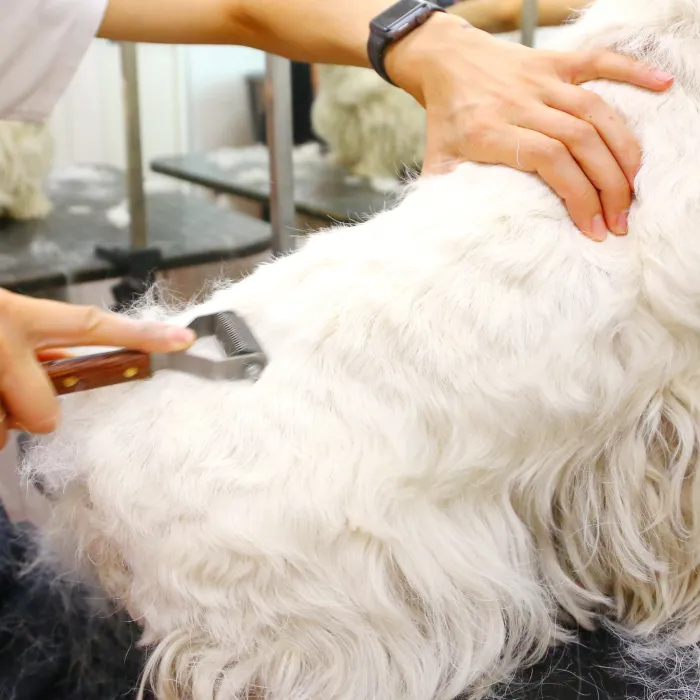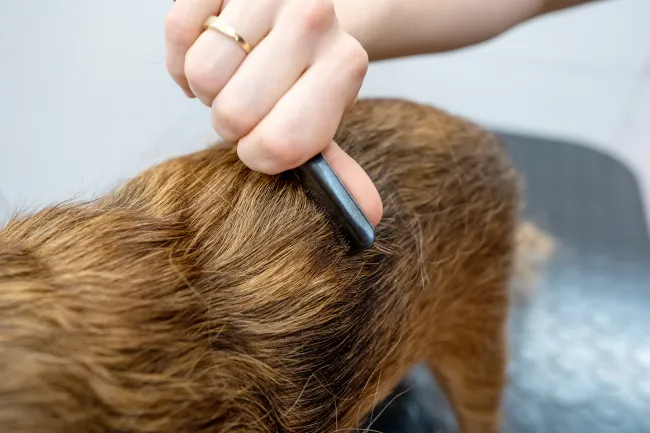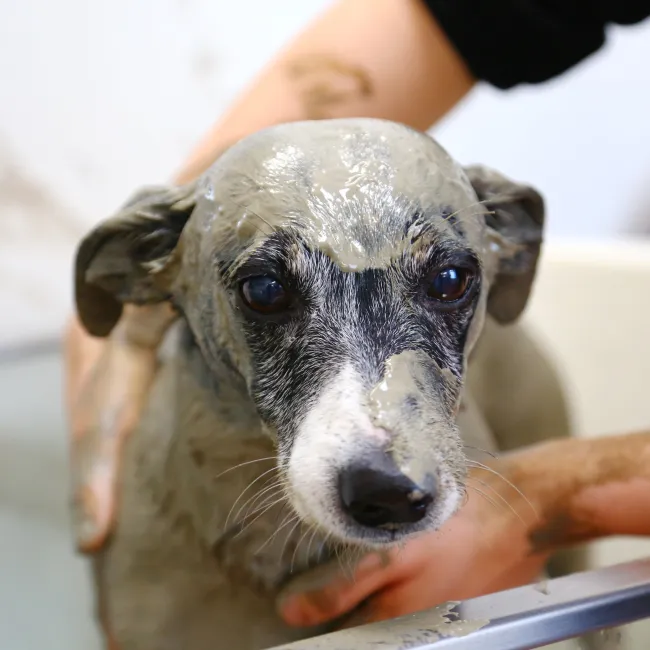Useful gift to your subscription
Get meat dog cookies from the famous bakery Dogtown with your first order for FREE! Become part of our Furnatura pack and receive practical advice, tips and great deals from the world of dogs

BLOG
If you have a dog with a coarse coat at home, you've probably heard of stripping. This activity, where you help your dog get rid of dead hair, is not rocket science and can be learned by anyone with a little bit of guidance. It just takes practice. Here is a guide on how to strip a dog properly and what tools to use.
Stripping is performed on dogs with coarse coats, i.e. on breeds that have coats composed of stiffer, coarser hairs that do not fall out naturally (except for the period just before stripping). This type of coat needs regular maintenance to keep it healthy and fulfil its function. Stripping removes dead hair that does not fall off on its own, allowing new hair to grow. Without stripping, the hair would grow in, the dog would be uncomfortable and there would be a risk of skin inflammation. Stripping is therefore important to maintain coat quality, skin health and the natural characteristics of dogs with coarse coats.
Breeds that are usually stripped include the Fox Terrier, West Highland White Terrier, Schnauzer, Border Terrier and Rough-coated Dachshund.
There are a plethora of trimming products and tools on the market that you can use. Something different suits everyone, but most groomers find that a combination of stripping knife, rakes, pumice stones and their own fingers work best. You will then need a pair of epilating shears to complete the neat look. What exactly are each tool used for?
Trimming rakes - to help remove dead topcoat and undercoat. They can also handle matted hair, which they can "cut through", so they are suitable for both coarse and long-haired breeds. They are used before stripping, when they remove large amounts of hair that you would have to strip by hand.
Trimming knife - used during the actual stripping. They usually come in 3 sizes, with fine being used for fine coats and coarse for coarse coats. They can handle most of the stripping work.
The pumice stone - or trimming stone - is used when trimming breeds with fine and delicate coats that might tear when using a knife. For example, it is very suitable for cocker spaniels.
Epilating scissors (modelling) - completes the final result. Use them, except in places that are difficult to trim (throat, cheeks, "panties") to align transitions (from longer to shorter hair - from body to legs, etc.).
TIP: All stripping tools are very sharp, so take care of both the dog and yourself. Handle them very carefully on the dog, especially around the genitals, skin folds, groin, etc. Always use all tools in the direction of hair growth.

Is your dog's coat starting to change colour, individual hairs are thinning and your dog is constantly scratching? If they are also easy to pull out, you will know for sure that it is time for a trim.
Before stripping, comb the coat thoroughly with a trimming rake. This will remove a substantial amount of hair, making your job easier. Use the rakes in the direction of the coat, otherwise the dog will pull and hurt when brushing and won't cooperate with you. Start at the head and work your way up through the back and sides to the tail.
After the combing comes the trimming itself. Whether you trim with your fingers or with a trimming knife, proper grip and trimming technique are important. Grasp the hair ready for trimming between your thumb and forefinger, the pumice stone or the flat of the knife and pull in the direction of the hair growth. Use your other hand to hold the skin. If you do the trimming well, the dog will usually cooperate with you and show no signs of nervousness.
Trim the coat gradually so that you don't miss any part of the body. Use your fingers or a trimming knife to trim the back, chest and flanks, or the tail. For sensitive areas such as the head, neck or paws, use an epilating scissors.
After each stripping, the coat should be washed to get rid of dirt and prevent inflammation of the skin. For this, the tenside-free mud mask is ideal, which is very gentle and at the same time naturally disinfects thanks to the clays, Dead Sea salt and nourishing oils.

